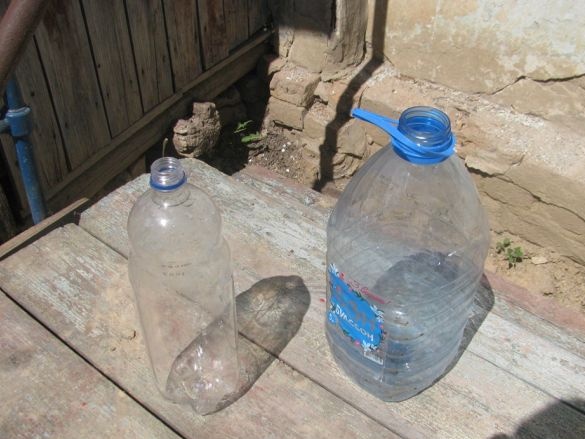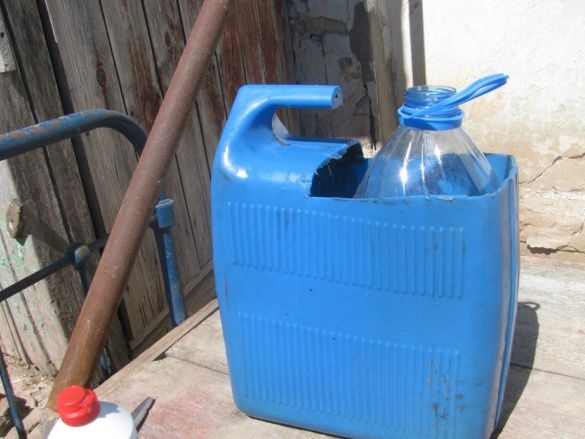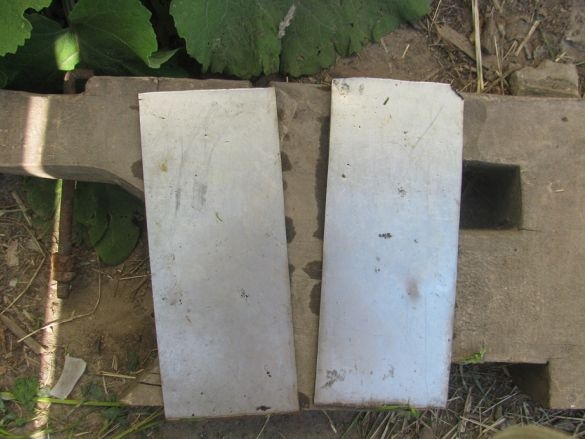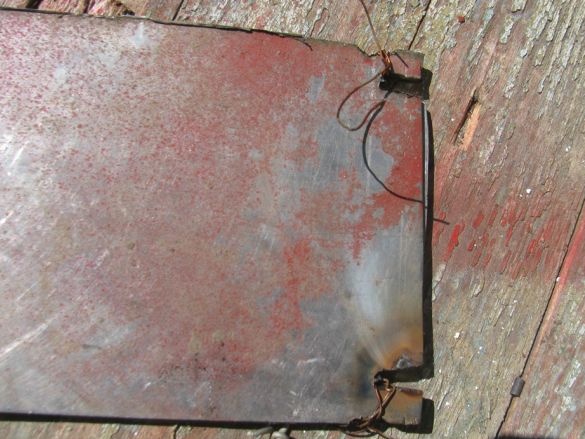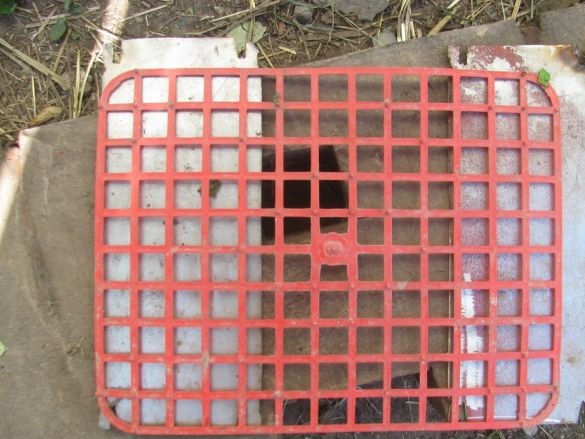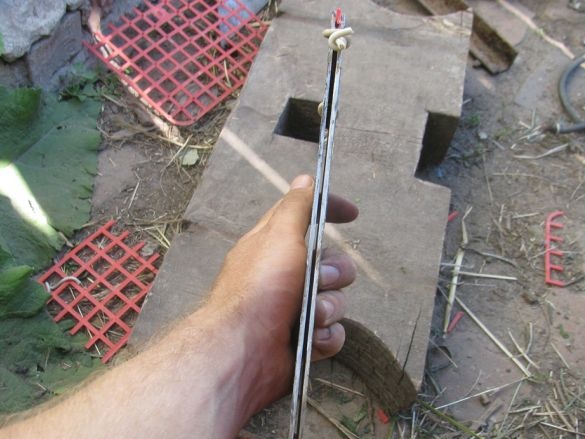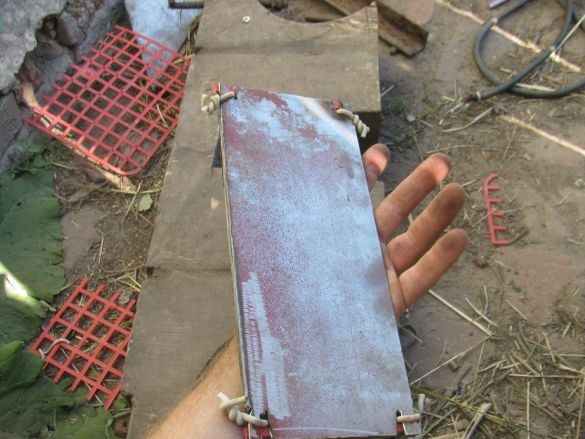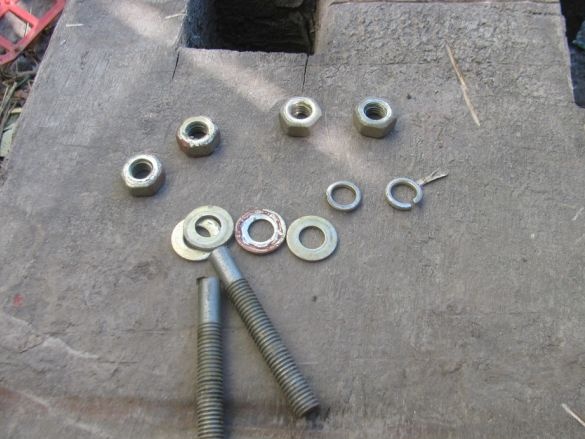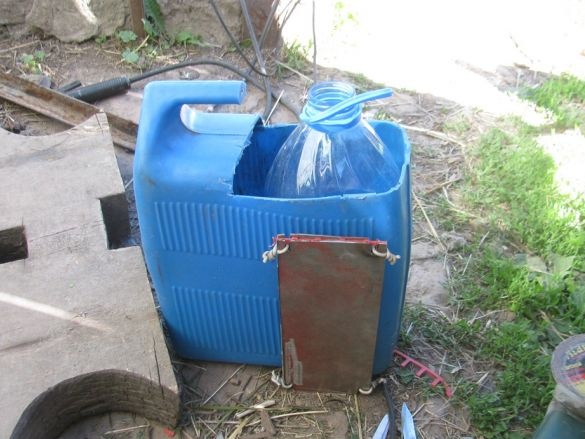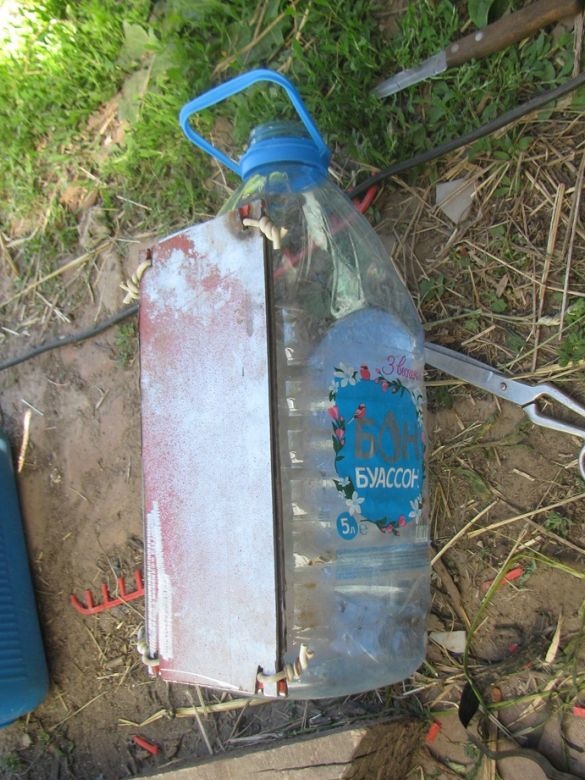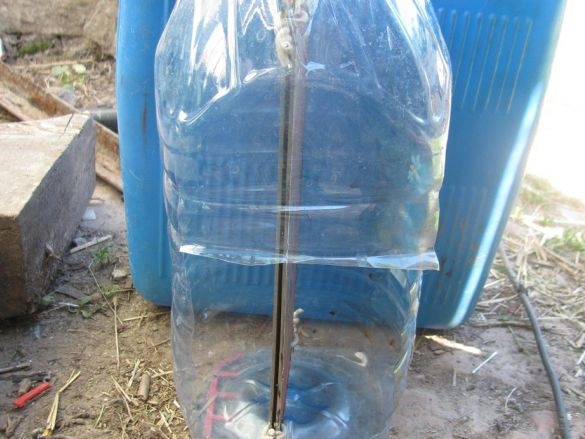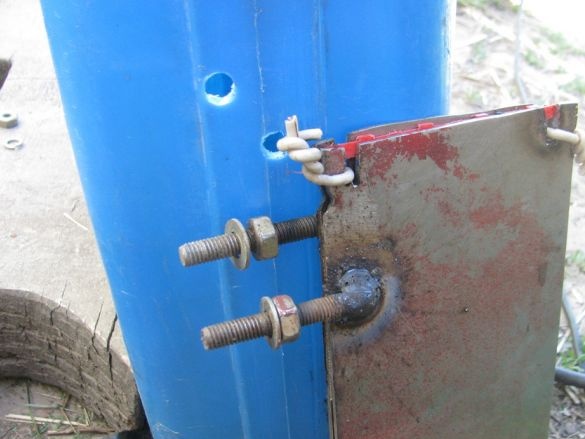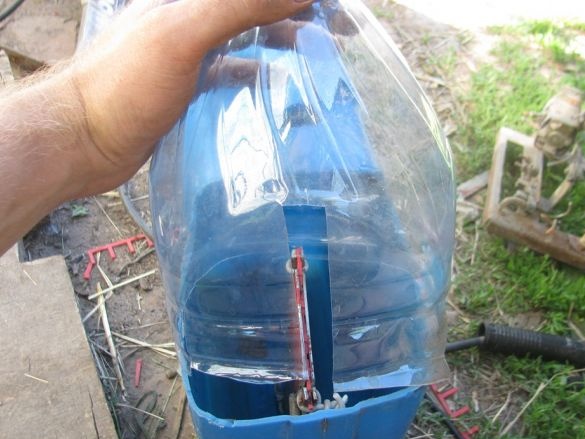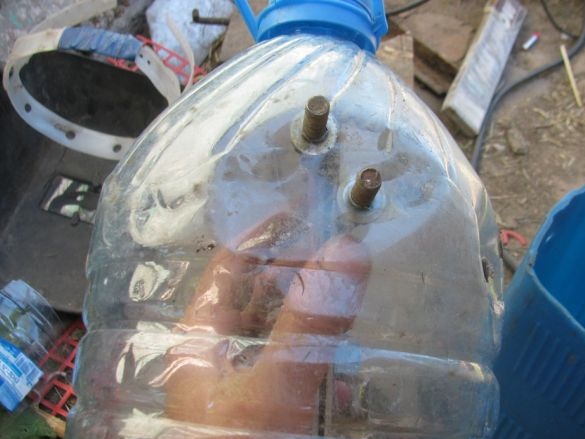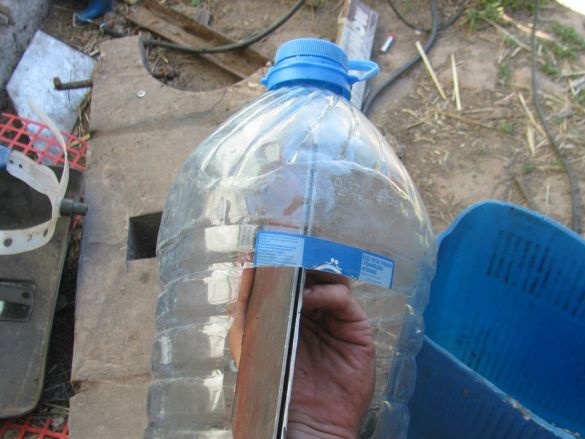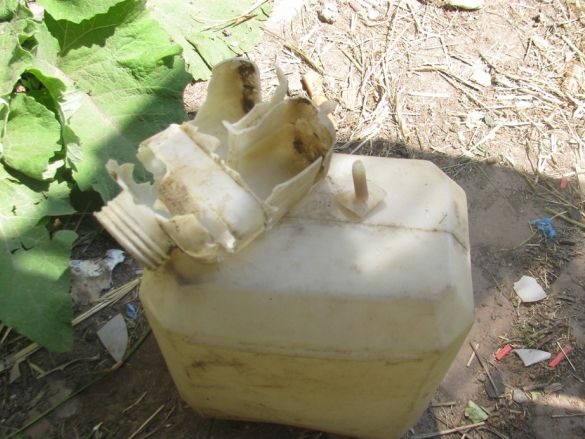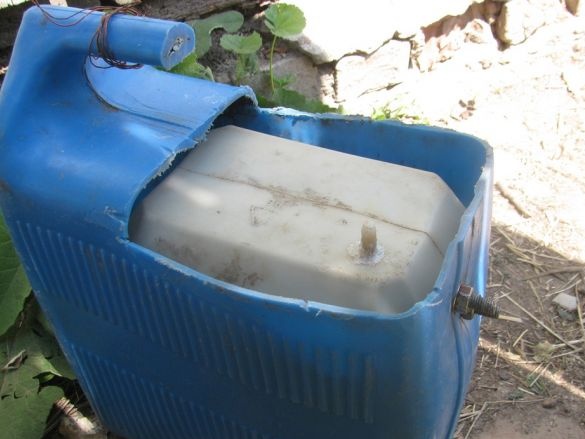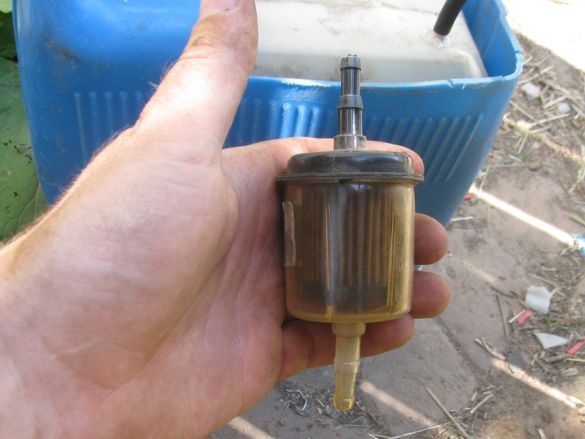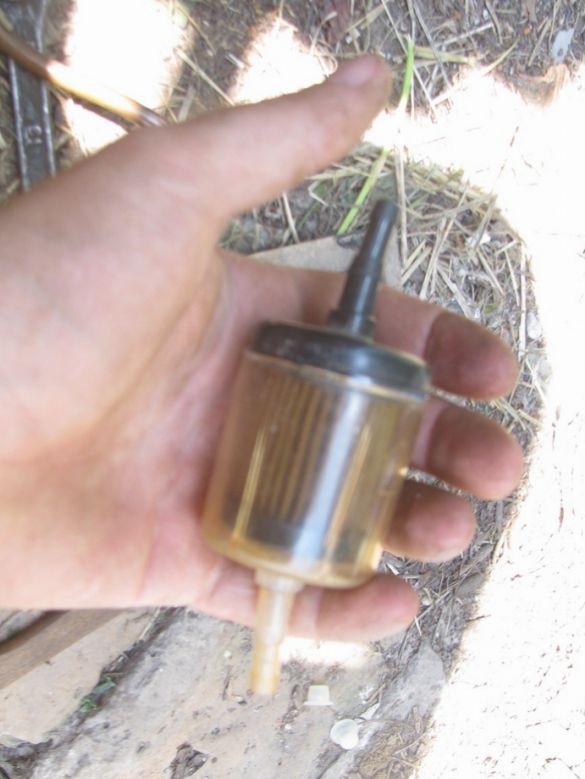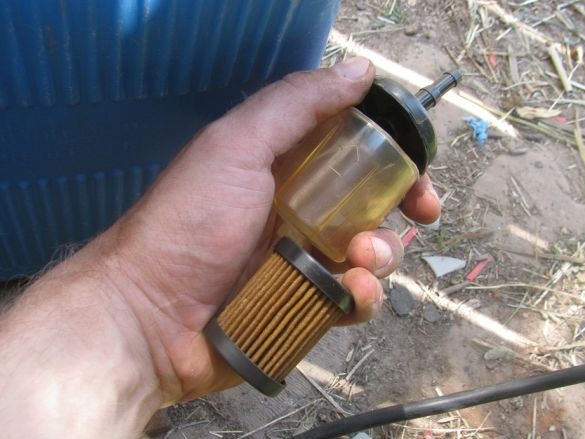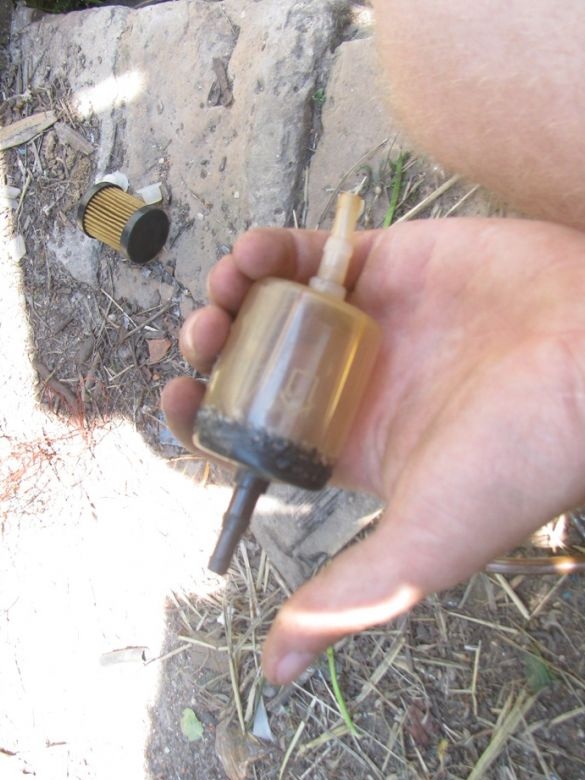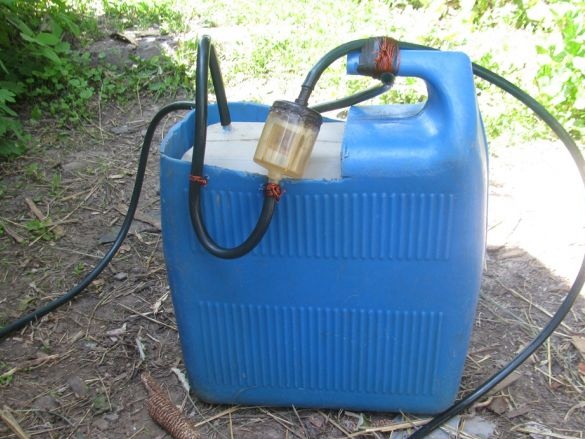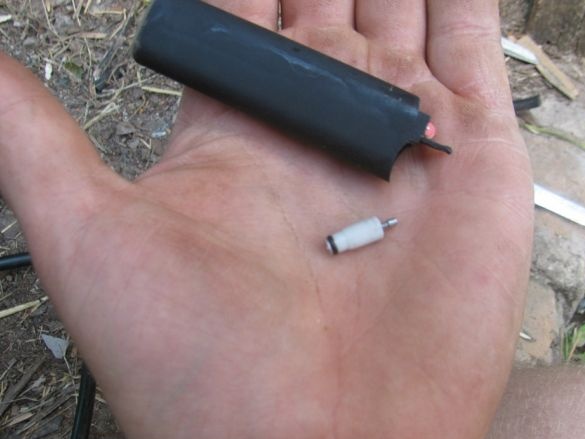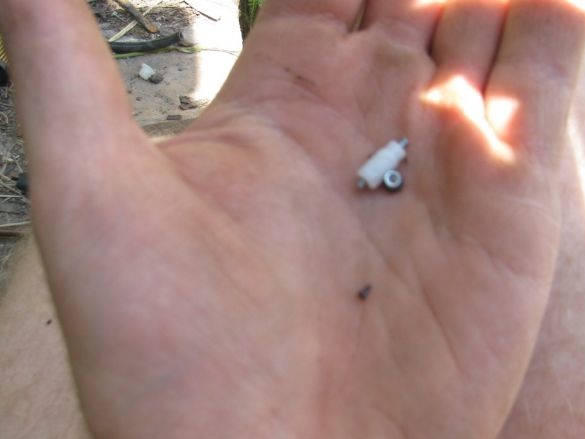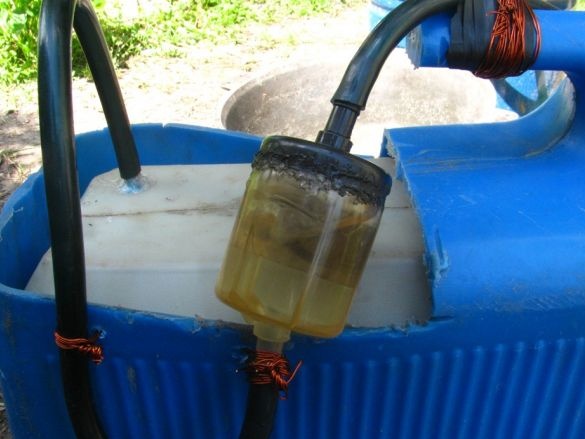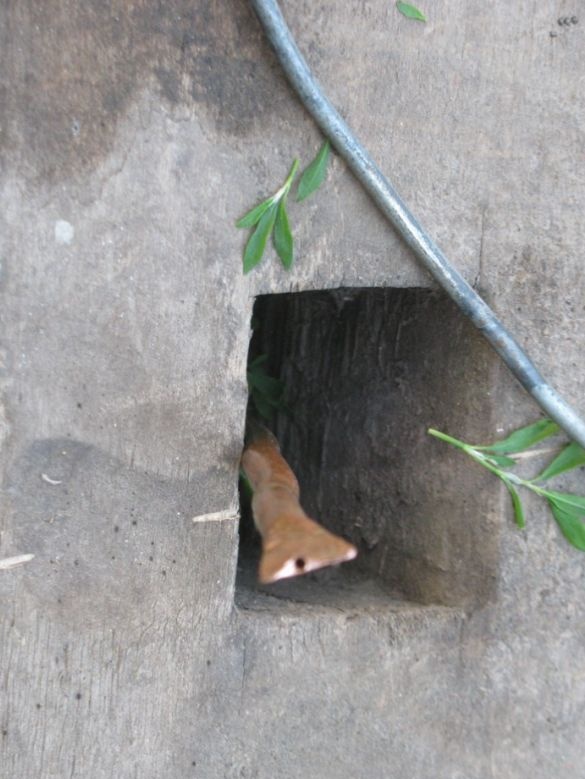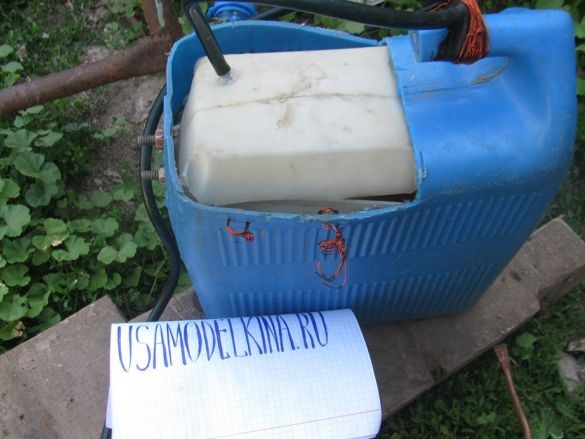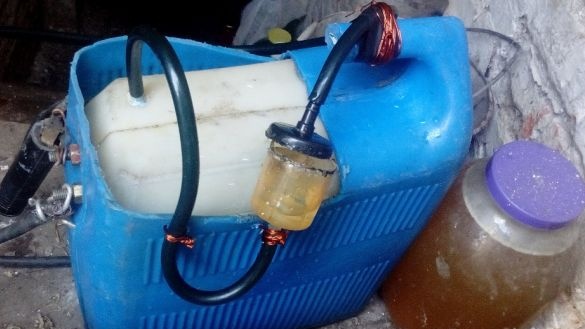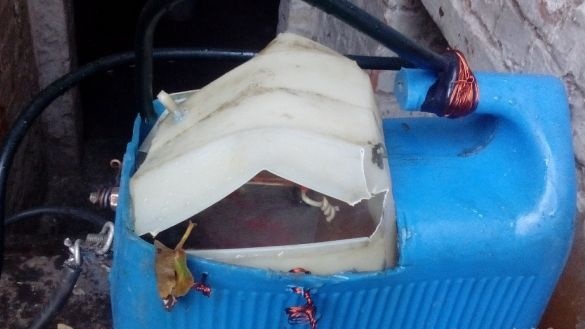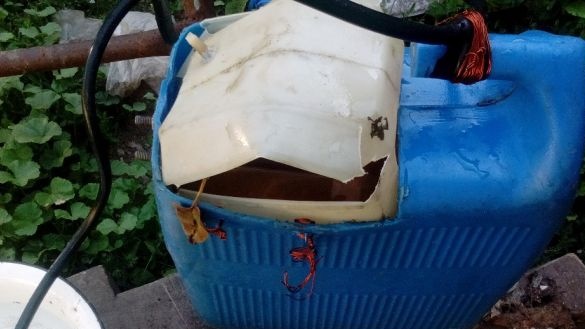Hello everyone, I decided to make a gas generator for myself, the idea was to make a gas burner with which you can cut metal, solder, heat a blacksmith furnace and so on. It was decided to use an inverter welding machine as a power source. Such a power supply produces a large current, which is what we need to split water into oxygen and hydrogen. I have a DC inverter, but it will work on an alternating one, including a transformer welding machine suitable.
I managed to get combustible gas, but so far I can’t figure out how to make the nozzle correctly. The fact is that explosive gas is a ready-made mixture that burns anywhere. So, for example, if you set fire to the usual natural, it will burn with a torch at the end of the pipe, and the fire will not go inside the pipe, since there is no oxygen that is in the atmosphere. But when we set fire to explosive gas, it burns inside the pipe! Due to this problem, my gas collector exploded twice and a water seal once.
The only way to solve this problem is to install a very small nozzle in diameter, with no explosion. Why, I do not understand. If you have a solution to this problem
Materials and tools that I used:
Material List:
- An old plastic canister from the times of the USSR;
- a bottle of 5 liters or another small canister;
- a piece of flexible hose;
- stainless steel (for electrodes);
- two bolts with nuts and washers or threaded rods (for contacts);
- plastic tubes to make fittings (or purchased from metal);
- old fine filter (for water seal);
- insulating tape, wire;
- nozzle from the lighter (I used this for the experiment);
- a piece of metal tube.
Tool List:
- welding machine;
- grinder;
- a drill (I picked holes with scissors ...);
- soldering iron.
The process of manufacturing a gas generator:
!!!Warning!!!
Be careful with such experiments! Explosive gas is very explosive, and it is ignited not only from matches, but also from compression. Do not collect gas, use it immediately as it is generated. If you burn even a little foam with this gas, a very loud explosion will follow. With a gas volume of several cubic meters, you can easily damage your hearing.
Gas expands at a monstrous speed and power! All tanks are made of plastic, no glass or metal! Otherwise, if you explode, get damaged by fragments!
Be careful when working with electrics and water, as these are incompatible concepts and together they are doubly life-threatening!
Step one. Preparing the main tank
The design problem of such a generator is that it is problematic to install large electrodes inside the tank. Also, the capacity should be large in size, since during operation the electrodes become very hot, and if there is little water, it will quickly boil. In addition, the design must be safe, it should not accumulate a lot of gas, especially the accumulation of explosive gas under pressure is unacceptable!
I decided to make a reactor of two tanks. The main capacity is needed in order to pour water into it. For these purposes, I found an old plastic canister. Using a grinder, he cut off the head of the canister so that a second tank could be installed inside. Make it all real grinder, but only the plastic melts, it flies great in all directions. I worked in shorts and then picked it up for a long time
Step Two We make electrodes
I made the electrodes of stainless steel, I don’t know the brand specifically, but the steel is perfectly cooked and attracted by a magnet. Stainless steel is good in that it does not oxidize during electrolysis, unlike all other metals. These are almost eternal electrodes. I cut two plates measuring approximately 23x10 cm, approximately the height of the tank.
Now we need to install the electrodes opposite each other with a small gap. The smaller the voltage of the power supply, the less we make the gap. I got it about 2 mm. Between the plates you need to install some kind of insulator. I found the net from the refrigerator, cut off the necessary pieces and set them around the edges, getting the necessary clearance. Now the question is how to connect the plates together, and this connection should not conduct current.
Drilling steel proved to be problematic, so I made cuts at the edges, and then twisted the plates with a copper wire with thick insulation. As a result, the cell was assembled
In the end, it remains to make contacts, with the help of which we will submit to a friend. For these purposes, I found a threaded rod and cut it in half. Welded rods to the electrodes. After that, they can be painted so as not to rust.
Step Three Gas gathering dome (first experiment)
To install the cell inside the main tank, drill holes. For fastening we use 4 washers and 4 nuts. Now we just have to install the gas collection tank. The bottom line is that when the generator is working, gas rises above the cell, so we need to install a dome over the cell that will collect it. I made the first dome from a 5 liter plastic bottle. We cut off the bottom from it, drill holes for the cell contacts and set it in its place.
The safety of this design is that when the gas accumulates and has nowhere to go, it will displace water from the dome, thereby slowing down the gas production. And if there is too much gas, it will simply go outside from under the dome.
Immediately after that, I installed a cover on the dome, connected a hose to it and started the experiment. The gas was set on fire directly at the end of the tube, an explosion occurred immediately, and water poured over me. The sound of the explosion was deafening, be careful ... Of course, after that the dome was completely destroyed.
Next, I made a better dome from another small plastic canister. But in the future, he was torn apart by my stupidity
In the video you can see how the gas is released. The current strength is the smallest, it is 35 Amps! At first he poured ordinary rainwater, but it was distilled and the generator did not work. But it worked as it should when I added a tablespoon of salt. For about 8 liters, you need an incomplete tablespoon of salt. The more salt, the stronger the reaction, but the load on the power supply will be higher.
Step Four Water lock
In order to protect the structure, I made a water lock after the first experiment. It was made of a car filter. It is necessary to cut it in a circle at the place of soldering and pull out the filter element, since it creates a lot of resistance. Well, then we collect everything back, everything is soldered with an ordinary soldering iron in 3 minutes. Install the water seal so that a suitable hose from below forms a communicating vessel with the filter housing. In principle, he worked perfectly, it was clear how the gas was flowing. But, unfortunately, this water seal subsequently tore. Then I also made a water trap out of the bottle, melting into the lid of the tube.
Step Five Nozzle
Here is the very nozzle on which everything worked and nothing exploded. The length of the torch on such a nozzle was 3 centimeters, the torch burned a tree well, and indeed everything in the world, the temperature there is very high. Unfortunately, the video is not recorded.
I pulled the nozzle out of the lighter, it gets out. Inside this thing there is a valve in the form of a cone made of rubber, it needs to be removed. The nozzle was installed inside a copper tube, reeling up electrical tape on it. But there was a problem, the flame burns at the tip of the nozzle and heats it up a lot, so this is also not an option.
Next, I decided to make a nozzle of a larger diameter to get a large torch, there is a lot of gas! I put a thin nail into the tube and tapped the tube with a hammer, and in the end I got a small hole. I set fire to the broads! The gas-collecting dome burst again, and I connected without a water seal in the hope that it would blow. But it didn’t work out. The experiment was carried out by placing a generator in the cellar, and the hose brought out. It sank heavily, if on the street, probably deaf.
Step Six Conclusion
In general, the generator works, a lot of gas is released. The more salt and amperes, the more gas. But you need to come up with a heating pad that will not let the flame into the hose. How to do it, who has any thoughts? You also need to figure out how to extinguish the burner, since when the pressure drops, the fire will also go inside the hose and lead to an explosion. For other experiments such as combustible foam, explosion of plastic bottles, the generator is completely ready!
That's all, share your thoughts on how to make a nozzle. I want to make a forge furnace or at least a gas cutter. By the way, this can be cooked with gas. That's all for me, good luck and take care!





